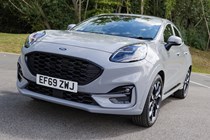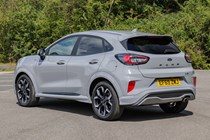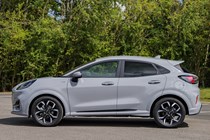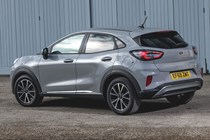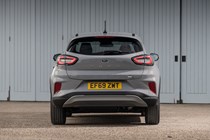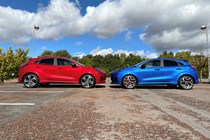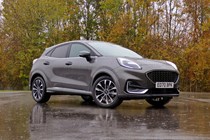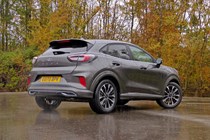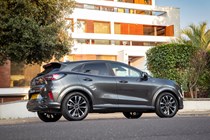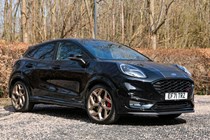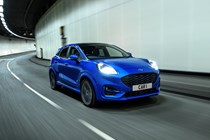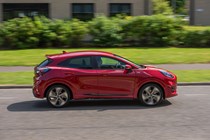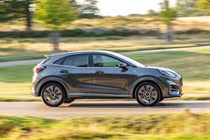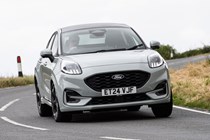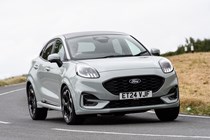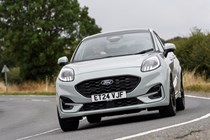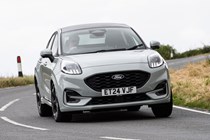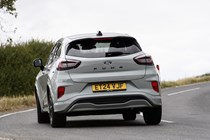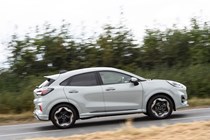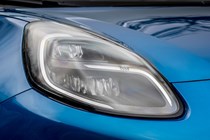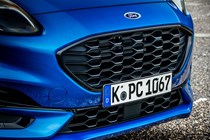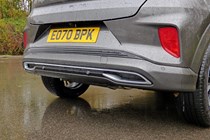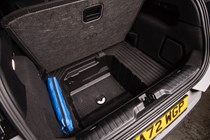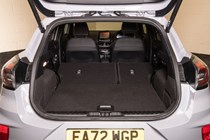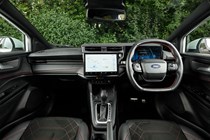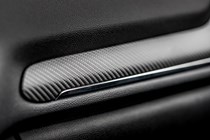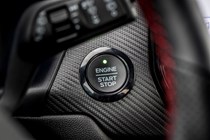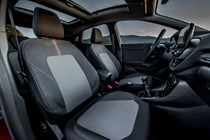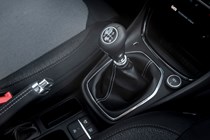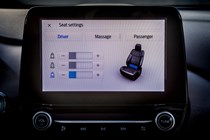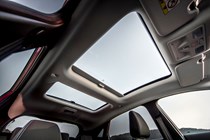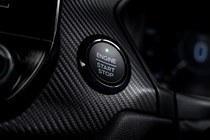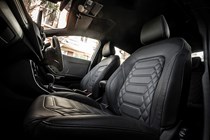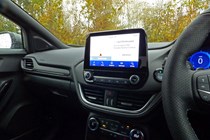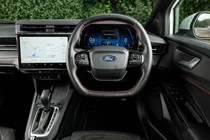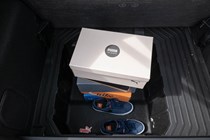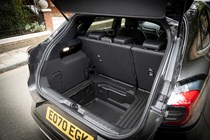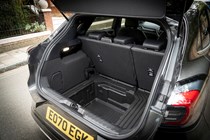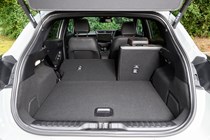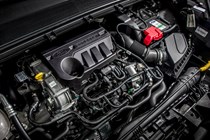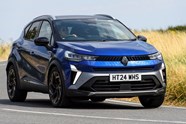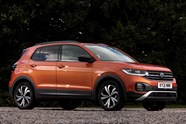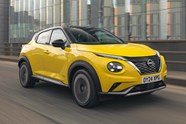Ford Puma review
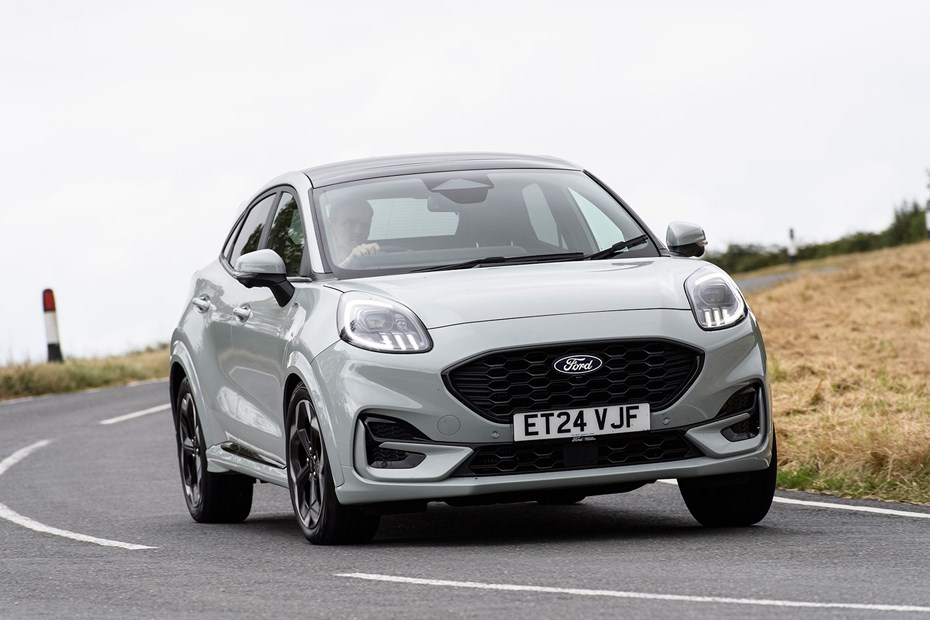
At a glance
| Price new | £26,580 - £31,580 |
|---|---|
| Used prices | £8,815 - £26,824 |
| Road tax cost | £195 |
| Insurance group | 11 - 17 |
Get an insurance quote with

|
|
| Fuel economy | 45.6 - 52.3 mpg |
| Range | 545 - 582 miles |
| Miles per pound | 6.7 - 7.7 |
| Number of doors | 5 |
| View full specs for a specific version | |
Available fuel types
Petrol
Pros & cons
- It's the best driving small SUV
- Fun and frugal petrol engines
- Huge boot thanks to Ford’s Megabox
- Rear legroom could be better
- Dashboard is a little bland
- Infotainment looks dated
Ford Puma SUV rivals
Overview
Since the death of the Fiesta, the mantle of Ford’s cheap, fun compact has fallen to the Ford Puma crossover SUV. The two cars share underpinnings as they both sit on the same platform, plus the Puma can be spec’d with the same 1.0-litre engines that once belonged to the Fiesta. As the bigger car, though, the Puma is more practical and more commodious inside, and thus probably the more natural family car.
A sharp-shifting manual gearbox, some well-weighted controls and a suspension setup that savours winding backroads have also helped to highlight the Puma’s more rambunctious side over the years, but it’s not all good news.
The Puma has been updated for 2024 and with it, the interior has been redesigned. It’s now drab at best, and not helped by a replaced steering wheel seemingly straight out of a Transit. It’s also no help to the Puma that the small crossover segment is now rich with some very strong competition, from the Skoda Kamiq to the Renault Captur, and many more all vying for your attention.
The standard Puma is offered with a choice of two engines. They’re both turbocharged 1.0-litre three-cylinder petrol units – the basic model has 125hp, while the more potent variant serves up 155hp. Both are mated to a six-speed manual gearbox as standard, although you can have a seven-speed automatic as an optional extra (which we’d strongly suggest you avoid). If you’re a speed freak, Ford also sells a Puma ST, which we’ve covered in a separate review.
There are four specifications to choose from called Titanium, ST-Line, ST-Line X and ST-Line Vignale. The Titanium model features 17-inch alloy wheels, automatic headlights, rain-sensing windscreen wipers and an 8.0-inch infotainment system. You also get a good range of standard safety equipment, including rear parking sensors, cruise control and lane-keeping assist.
ST-Line cars get a more aggressive body kit, a unique set of 17-inch alloy wheels, sports suspension, sports seats and a 12.3-inch digital instrument cluster. ST-Line X models build on that specification with 18-inch alloy wheels, half-leather seats and a wireless smartphone charger, while ST-Line Vignale cars have all the toys Ford can throw at a car. Upgrades for the top-spec car include front parking sensors, heated front seats, a heated steering wheel and keyless entry.
Over the next few pages, we’ll review each aspect of the Ford Puma. We’ll consider its practicality, interior quality, driving experience and running costs before offering our final verdict on the car. If you’d like to find out how we reached our verdict on the Ford Puma, head over to our how we test cars to find out everything you need to know.




